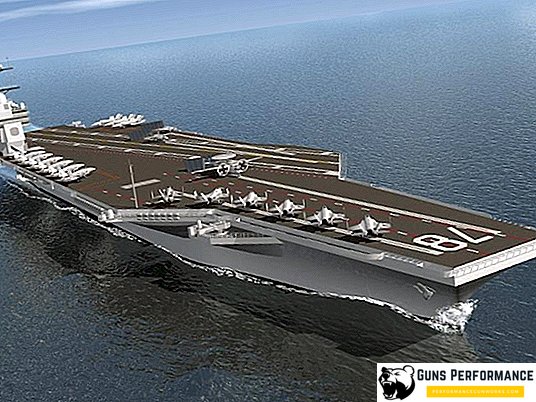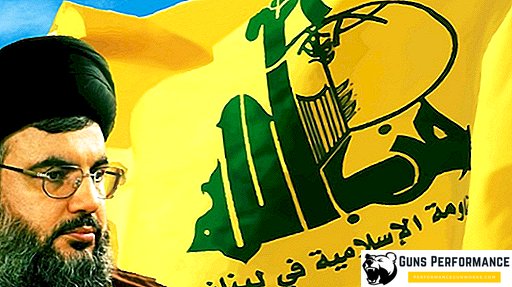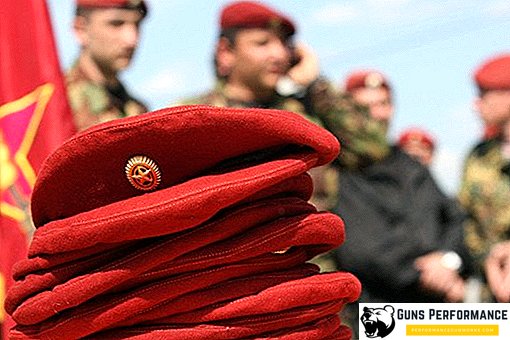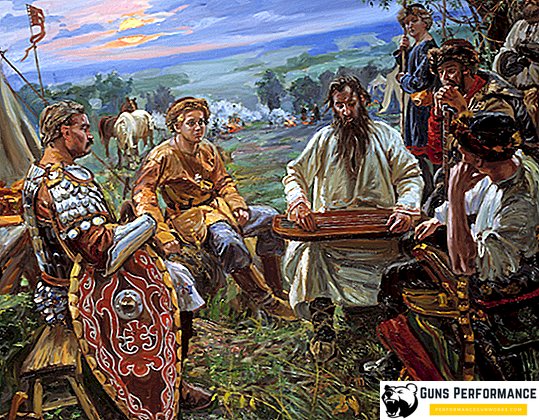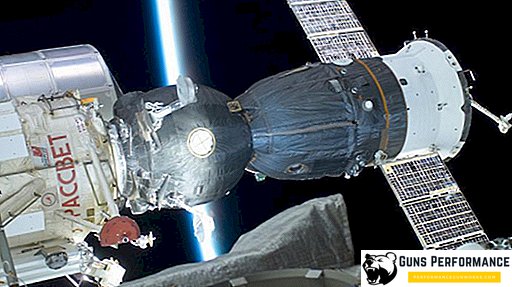The term "rifle" has firmly entered our vocabulary, personifying the most common type of firearm used by man. For an ordinary person, ideas about these weapons are the most abstract. When it comes to rifles, it means individual combat, sporting weapons or the current hunting arsenal. Today, army units can not be imagined without automatic rifles. Large-caliber self-loading rifle - the main weapon of the sniper. Athletes compete in shooting from a small-caliber or air rifle. A hunting rifle is an essential attribute of tradesmen. All of these types and types of weapons combine high accuracy of combat and long range shots. Hence the popularity that is characteristic of this type of individual weapon.
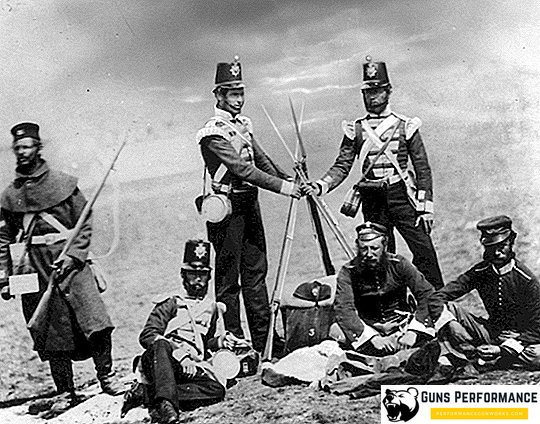
Rifle appearance
With the advent of gunpowder, the era of firearms began. Over time, pistols and guns became the main weapon on the battlefield, displacing cold weapons, bows and crossbows. Despite the fact that the tactical, technical and combat characteristics of the first guns were far from perfect, the great firepower of the firearms bribed them. A powerful charge of gunpowder sent a bullet at great speed over a long distance. The first smooth-bore muskets and arquebuss fired heavy bullets and were able to penetrate heavy knight armor. The only thing seriously losing a smooth-bore weapon is a low rate of fire and low accuracy. Loading was carried out through the barrel, for which even a trained soldier took quite a lot of time. The shot was made as a result of the wick, and then, as a result of the work of the shock-flint mechanism.
The absence of the necessary equipment did not allow achieving the accuracy of processing the barrel of a firearm, which accordingly made the caliber of a gun or a pistol conditional. Bullets poured by hand, without an exact fit to the size of the barrel. With such technical capabilities, there was no need to talk about high accuracy. However, technical progress did not stand still. The industrial revolution that took place in the countries of Western Europe led to the emergence of completely new technological possibilities in the weapons business. In place of smooth-bore rifles and pistols came rifled weapons. From the middle of the 19th century, a combat rifle, an individual firearm, began to enter into service with the troops. Even taking into account the fact that the performance characteristics of the first rifle models were small, the combat use of a rifle weapon proved its high efficiency and practicality.

Due to the presence in the barrel rifling, a new weapon, respectively, and a simplified name - a rifle. The first combat samples were tested on the battlefield during the Prussian-Danish War of 1848-1850. The Prussian army, in contrast to the Danish troops, was armed with rifled rifles, which was the decisive factor in military clashes. New combat rifle fired further and more accurately. Over time, the Germans were able to improve this type of infantry weapons, starting to produce fittings. Crimean War of 1853-56 finally buried the smooth-bore guns, withdrawing this type of firearm from combat use. Enfield British muzzle-loading rifles showed their superiority on the battlefield. Since that time, all the armies of the leading countries switched to rifled guns. A new type of weapon in 1856 received the official name - a combat rifle, becoming the main individual weapon of an infantryman. There were shortened rifles or carbines, which entered service with the cavalry.
Rifle device. The birth of optimal weapons
The first rifles were characterized by childhood diseases. This was especially true of the method of loading and operation of the firing mechanism. This type of rifle ruled the battlefield for a short time. The only mass use of rifle guns charging through the barrel was the US Civil War, where both the army and the North and the South were armed with Springfield rifles. US rifles modified in 1855 and 1861 were the last most technically advanced muzzle-loading weapons.

In the 70s of the XIX century it was possible to observe a real leapfrog in the technical equipment of the armies. Only appeared rifled muzzle-loading guns, almost immediately gave way to breech-loading rifles, technically more advanced.
Back in 1859, a Sharps rifle equipped with a wedge gate was released in the USA. Behind her began to appear multiply charged rifles. These systems were equipped with a sliding bolt with a movable trigger guard. Despite the perfection of the loading mechanism, the weapon was designed for shooting revolver cartridges. The lack of ammunition power was the main drawback of the first breech-loading rifles. The weapon did not receive recognition of the military, but at the household level, such samples were recognized.
In Russia, after defeat in the Crimean War, the army in 1867 received muzzle-loading rifles of the Carle system. However, this type of rifles did not long dominate the battlefield. Already in 1870, Russia decided to adopt the American rifle of the Berdan system. The product had a longitudinal sliding loading mechanism. Used for firing cartridges with a metal sleeve. Such a loading system made it possible to simplify the supply of ammunition. Like the Americans, the Germans also did not sit with folded arms. In 1871, through the efforts of the Mauser brothers, the Gewehr 1871 combat rifle appeared under a cartridge with a metal sleeve, which also had a longitudinal-sliding bolt. The following year, the French launched into mass production their offspring, the Gra rifle.

All samples with swinging and wedge bolts were still produced in limited quantities, however, rifles with sliding bolts occupied the leading place in the battle formation. The only sample of weapons with a wedge bolt, which was produced massively and has found wide application - is the American Winchester Model 1873 rifle with a lever action. This weapon became legendary along with the revolver of the Colt system, a weapon for conquering the Wild West.
Starting from the 80s of the XIX century, all the rifles of the world become shoplifting, representing the main type of infantry weapons. In Germany and France, in England and in the United States in service of the armies are samples of weapons with longitudinal-sliding bolts. All army samples are multiply charged. Only hunting rifles remain single-shot. Over time, rifles received another technical novelty - direct action closures. The shooter could now send the cartridge into the chamber in two movements. Mannlicher and Mauser rifles operate according to this principle. In Russia, since 1891, the Mosin magazine rifle with a similar loading mechanism is in service. Berdanka has become an element of the hunting arsenal, like many other samples of single-shot rifles.

Along with the improvement of the loading mechanism, work was underway to unify rifle calibers. The first rifles had a musket caliber of 14-16 mm and fired round or blunt bullets. After the end of the Civil War in the United States and the Franco-Prussian War in Europe, a transition is planned in a number of countries to pistol cartridges. The use of revolving cartridges in a combat rifle in practice showed an insufficient rifle firepower. More powerful cartridges were needed, capable of providing a high speed of a bullet. As a result, single-shot German, French and American rifles receive ammunition caliber 10-12 mm.
A large caliber significantly limited the combat capabilities of weapons, so the next step in the weapons sector was a massive transition to smaller-caliber ammunition. At the turn of the century 6.5-8 mm becomes the main rifle caliber. Smokeless powder increased the power of the shot. Increased speed of the bullet. The cartridges became smaller, which made it possible to place a certain amount of ammunition in the store. The unification of rifle calibers made it possible to improve the device of the rifle, making it multiply charged.
The Russian rifles of the Mosin system of the sample of 1891 had a caliber of 7.62 mm, which became the main for all domestic weapons for all subsequent years. All combat modifications of this weapon had this caliber. On the basis of the main sample was created Mosin carbine 1907, which were equipped with police and cavalry units.

Rifles of Russia in modern conditions
With the beginning of the 20th century, a whole series of wars rolled through the world, where the shape of combat infantry weapons was finally formed. The share of the rifle had a lot of tests that showed the further development of this type of weapon.
First, the Russian-Japanese war, then the Balkan wars did not indicate some of the shortcomings of the existing models. The armies of the world receive multiply charged rifles. The best rifles are produced with the stigma of German, British and American arms firms and companies. Troops are mainly armed with Springfield M1903, Mauser 98 and Lee-Enfield rifles, with swivel bolts. German weapons are readily bought by the Balkan countries, the Ottoman Empire and a number of other countries. Store American and British rifles are in service with the Japanese army, are supplied to China, the countries of Southeast Asia. The armies of the countries of Central and South America are equipped with German, French and English models. A review of the armament market at the beginning of the 20th century shows that American and German rifles, which were powerful and easy to use, were in great demand.
Several lost to American and German samples of British weapons. British rifles did not have that firepower and were significantly weaker than their direct competitors. The Russian trilinea, which fired a powerful 7.62 mm cartridge, had good firing characteristics, but lost in weight and dimensions.
Russian weapons are Mosin and Berdan rifles. The first were the main weapons of war. The second type was used selectively, being a hunting weapon and used for limited purposes. The trishline was constantly improved, having passed the crucible of the First World War, participating in the battles of the Civil War. In 1930, the rifle was upgraded, received the index 1891/30. With this weapon, the Red Army entered the Great Patriotic War, it was the main infantry type of weapons. Mosinskaya trehlineyka produced from 1932 to 1938 in various versions, including sniper and sports version. At that time, this weapon was the most massive in the USSR. Already during the war, the army units of the Red Army began to be equipped with Shpagin submachine guns and self-loading automatic rifles. New types of weapons significantly increased the infantry fire capabilities. For scientific purposes and sports shooting, they produced a small-caliber TOZ-8 rifle of the 1932 model, which was widely known and popular. This weapon was a single-shot sports rifle caliber 5.6 mm. Almost all military-sports societies of the USSR had this weapon on equipment. Melkashka has earned the respect of hunters-hunters, who with such caliber could successfully hunt the fur-bearing beast.

The Simonov automatic rifle, released in 1936, was the first step towards the automation of rifle weapons in Russia. This was followed by a Tokarev self-loading rifle, the well-known SVT-38. This weapon successfully passed through the entire war and remained in service with the Soviet Army for almost another 20 years. Only in 1963, the Soviet Army received a new automatic rifle of the Dragunov system in 7.62 mm caliber. This weapon, equipped with a telescopic sight, continues to be a favorite weapon of snipers.
Foreign experience of rifle development
After the beginning of the First World War, where the machine gun became the king of the battlefield, it was necessary to increase the rate of fire of rifles. The result of the work of designers in this direction was a self-loading rifle, the prototype of modern automatic rifles, which are in service with modern armies. The appearance of a new automatic assault rifle (automatic), which significantly increased the firepower of the infantry, deserves attention.
Self-loading rifles and carbines have become the main type of infantry weapons. Single shotguns were used as the main hunting weapon. The loading mechanism has become fully automated, operating through the use of recoil force and the action of powder gases. At first, sniper rifles were only modified models of serial weapons. A little later, large-caliber rifles appeared. Small calibers became the lot of sports and hunting weapons.

The results of the Second World War showed that self-loading rifles did not possess those qualities and fire power that were often required on the battlefield. Automatic fire has become a key method of firing. Neither the trigger mechanism nor the excessively powerful rifle cartridge was suitable for these purposes. Back in the war years, there was a transition to an intermediate cartridge, which would be suitable for automatic firing. German rifle StG 44 became a transitional stage on the path of further improvement of this type of weapon. The trend of the transitional sample continued with a Kalashnikov assault rifle, in which a completely different principle of operation was already applied. German submachine guns used during the war fired 9 mm pistol cartridges. The new German assault rifle was created for a 7.92 mm caliber cartridge. This increased the capacity of the store and increased the fire capabilities of the weapon.

In other countries, after the war, universal automatic rifles, capable of conducting both single fire and firing bursts, appeared. The most famous were the Belgian rifle FN and the American M-16. Distinguished these rifles smaller caliber. Unlike the German and Soviet weapons, Western samples were designed for a caliber of 5.56 mm. The reduced caliber made it possible to significantly increase the magazine’s capacity and increase the fire capabilities of the weapon. If assault rifles were more prone to machine guns and had a shortened barrel, then automatic rifles managed to retain the main tactical and technical characteristics inherent in this type of weapon.
Despite ever-growing demands, rifles remain, along with machine guns, the main type of infantry weapon in the modern army. Extensive combat and technical capabilities make it possible to produce these weapons in various modifications that meet the new tactical conditions of warfare.


